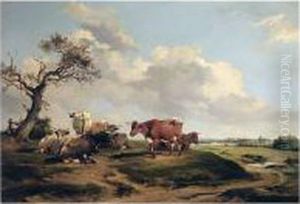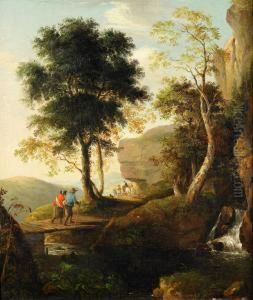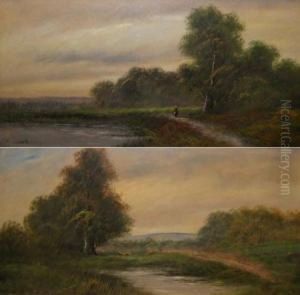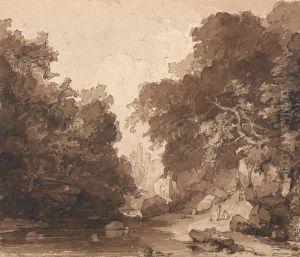Thomas Peploe Wood Paintings
Thomas Peploe Wood was a British artist known for his landscape painting and portraiture, born in 1817 in the United Kingdom. Although not as widely recognized as some of his contemporaries, Wood's work did contribute to the British art scene of the early 19th century. His artistic career was relatively short due to his untimely death at the age of 28 in 1845.
Wood's early life and artistic training are not extensively documented, but it is known that he developed an interest in art at a young age. He might have been influenced by the Romantic movement, which was prevalent during his lifetime and emphasized nature and emotion in art. Wood's landscapes reflect a keen observation of natural settings, and he was adept at capturing the mood and atmosphere of the British countryside.
During his career, Thomas Peploe Wood exhibited his works at various institutions, which was a common practice for artists seeking recognition and patronage. Exhibitions at places such as the Royal Academy would have provided him with opportunities to display his work to a broader audience. Despite his potential, Wood's career was cut short, and he did not have the chance to fully develop his artistic legacy.
After his death, Wood's works were largely overshadowed by those of his peers and successors. The Victorian era, which followed shortly after his death, saw a shift in artistic tastes, and as a result, the appreciation for Wood's style may have waned. Today, while he might not be a household name, Thomas Peploe Wood's paintings are still of interest to art historians and collectors who specialize in British art of the early 19th century. His contributions, though modest in comparison to the giants of his era, still provide insight into the period's artistic milieu and are valued for their aesthetic and historical qualities.




